ACL injuries are common in sports, often due to non-contact trauma, with higher rates in female athletes. Return-to-sport testing ensures safe and effective recovery, preventing reinjury through strength, hop, and functional assessments.
1.1. Overview of ACL Injuries and Their Impact on Athletes
ACL injuries are common in sports, often due to non-contact trauma, with female athletes at higher risk. These injuries significantly impact athletes by causing prolonged recovery, potential reinjury, and psychological challenges. ACL tears disrupt knee stability, leading to pain, swelling, and limited mobility. Returning to sport requires rigorous testing to ensure strength, symmetry, and functional readiness. The emotional and physical toll underscores the importance of comprehensive rehabilitation and objective criteria for safe return to competition.
1.2. Importance of Return to Sport Testing After ACL Reconstruction
Return-to-sport testing is crucial after ACL reconstruction to ensure athletes are ready for competition. It evaluates strength, symmetry, and functional performance, reducing reinjury risk. Testing includes assessments like single-leg squats, hop tests, and agility drills. These measures help confirm that the injured knee has achieved sufficient recovery and stability. Without proper testing, athletes may return too early, risking further damage. Thus, structured testing protocols are essential for safe and successful reintegration into sports activities, aligning with medical clearance and functional readiness.
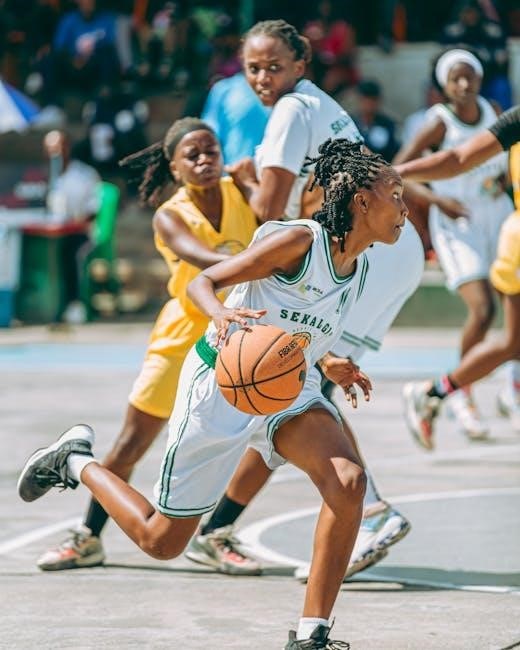
Key Criteria for Returning to Sport After ACL Reconstruction
Return-to-sport criteria include medical clearance, full ROM, strength symmetry, pain-free movement, normalized gait, and passing functional tests like hop and agility drills to ensure readiness.
2.1. Medical Clearance and Physician Approval
Medical clearance is a primary criterion for returning to sport after ACL reconstruction. Physicians evaluate knee ROM, strength, and absence of effusion or pain. Clearance is granted when these metrics meet predefined thresholds, ensuring the athlete is medically ready. Isokinetic testing often confirms strength symmetry with the uninjured limb. Physician approval is based on objective measures and clinical judgment, minimizing reinjury risks. This step is crucial for safely progressing to sport-specific activities and ensuring long-term joint health.
2.2. Full Range of Motion and Symmetry with the Uninvolved Limb
Full range of motion (ROM) and symmetry with the uninvolved limb are critical for safe return to sport. Athletes must achieve pain-free knee flexion and extension, mirroring the uninjured leg. ROM is assessed through passive and active measurements, ensuring no deficits. Symmetry ensures proper movement patterns, reducing compensatory mechanisms. Criteria often include achieving at least 110 degrees of knee flexion without pain or effusion. Failure to meet these standards may indicate incomplete recovery, risking reinjury or poor performance. Proper ROM and symmetry are foundational for advanced functional testing and sport-specific movements.
2.3. Muscle Strength and Isokinetic Testing Requirements
Muscle strength and isokinetic testing are essential for ensuring readiness to return to sport after ACL reconstruction. Athletes must achieve at least 90% strength symmetry in both hamstrings and quadriceps compared to the uninjured limb, measured at 60º/sec and 300º/sec. Isokinetic dynamometry is commonly used to assess these metrics. Strength deficits can lead to poor movement patterns and increased reinjury risk. Meeting these criteria ensures proper neuromuscular control and prepares the athlete for dynamic, sport-specific movements. Strength recovery is a cornerstone of successful return-to-sport outcomes.
2.4. Absence of Pain, Effusion, and Joint Instability

Athletes must exhibit no pain, effusion, or joint instability to meet return-to-sport criteria. Pain-free movement ensures proper mechanics, while minimal swelling indicates healing. Joint stability, confirmed by clinical exams like the KT-2000 test, prevents further damage. Achieving these criteria is crucial for safe return to competition, reducing reinjury risks and ensuring optimal functional performance in dynamic sports environments. These assessments are foundational for determining readiness and confidence in athletic activities. Proper management of these factors is vital for long-term success and injury prevention.
2.5. Normalized Gait and Weight-Bearing Mechanics
Normalized gait and weight-bearing mechanics are critical for safe return to sport. Athletes must demonstrate symmetric weight distribution and movement patterns compared to the uninjured limb. Proper gait mechanics ensure minimal compensatory strategies, reducing reinjury risk. Assessments include single-leg stance, gait analysis, and weight-bearing exercises to evaluate symmetry and control. Achieving at least 90% symmetry with the uninvolved limb is often required. This criterion ensures functional recovery and readiness for dynamic sports activities, promoting long-term joint health and optimal performance.

Functional Assessment and Testing Protocols
Functional assessments evaluate an athlete’s readiness through single-leg squats, broad jumps, hop tests, and agility drills, ensuring optimal recovery and sport-specific performance capabilities post-ACL reconstruction.
3.1. Single-Leg Squats and Balance Testing
Single-leg squats and balance testing assess lower limb stability, strength, and neuromuscular control. Athletes perform weighted squats on both involved and uninvolved limbs to ensure symmetry. Proper form, pain-free movement, and minimal sway indicate readiness. These tests identify muscle imbalances and functional deficits, crucial for sport-specific demands. They also evaluate proprioception and dynamic balance, ensuring the athlete can manage uneven surfaces and rapid direction changes safely. Passing these tests is a key milestone in progressing to more advanced agility and plyometric exercises, reducing reinjury risk and enhancing performance confidence.
3.2. Broad Jump and Landing Mechanics Evaluation
The broad jump and landing mechanics evaluation assesses explosive power, symmetry, and proper landing techniques; Athletes perform single-leg broad jumps, focusing on distance and control. Landing quality is evaluated for soft, balanced landings with minimal knee valgus or varus. Proper mechanics ensure reduced injury risk and improved sport performance. Passing criteria include achieving 90% symmetry between limbs and demonstrating consistent, controlled landings. This test is critical for confirming readiness to progress to dynamic, high-impact activities, ensuring athletes can safely manage explosive movements and quick changes of direction during competition.

3.3; Hop Tests and Time-to-Completion Metrics
Hop tests assess functional recovery by measuring distance, symmetry, and speed. Single-leg hop for distance evaluates limb strength and power, while crossover and triple hops challenge agility and coordination. Time-to-completion metrics ensure athletes meet gender-specific norms, with males typically completing tests in 4.5-5.5 seconds and females in 5.5-6.5 seconds. Proper landing mechanics and minimal side-to-side differences are critical. These tests confirm the athlete’s ability to perform dynamic movements safely, ensuring readiness for sport-specific activities without compromising joint stability or function.
3.4. Agility Drills and Plyometric Exercises
Agility drills and plyometric exercises simulate sport-specific demands, enhancing neuromuscular control and explosiveness post-ACLR. Drills like box jumps, ladder exercises, and shuttle runs test quick changes of direction, while plyometrics improve power and reactivity. These exercises ensure athletes can safely transition to dynamic movements, reducing reinjury risk. Proper technique and symmetry are emphasized, with progression based on performance and comfort. This phase bridges functional recovery and competitive readiness, ensuring athletes are prepared for the physical and mental challenges of their sport.
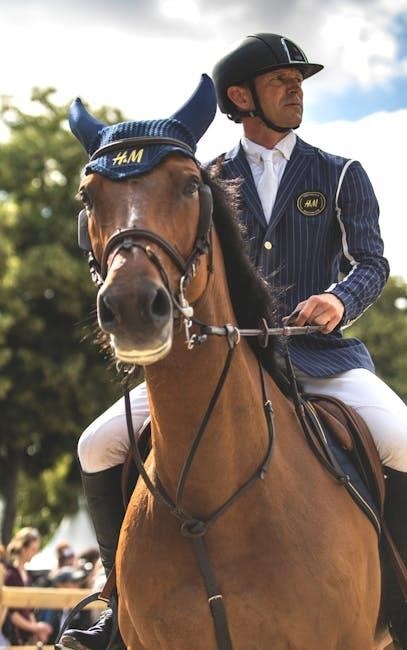
Phases of Return to Sport Progression
Return to sport progression includes post-surgical recovery, strengthening, running, agility drills, and injury prevention, ensuring a safe transition to competition.
4.1. Phase 1: Post-Surgical Recovery and Basic Mobility
Phase 1 focuses on post-surgical recovery, emphasizing pain management, swelling reduction, and restoring basic knee mobility. Patients work on achieving full range of motion, minimizing effusion, and normalizing gait mechanics. This phase also introduces gentle exercises to maintain muscle strength and prevent atrophy without overloading the knee. The goal is to ensure a stable foundation for more intensive rehabilitation in subsequent phases, avoiding complications and promoting early functional recovery. Proper adherence to this phase is critical for successful long-term outcomes.
4.2. Phase 2: Strengthening and Neuromuscular Control
Phase 2 emphasizes strengthening the lower extremities, particularly the hamstrings and quadriceps, through controlled exercises like leg presses and curls. Neuromuscular control is enhanced via balance drills, single-leg stands, and plyometrics. The focus is on achieving symmetrical strength with the uninvolved limb and improving joint stability. Functional movements, such as step-ups and lateral walks, are introduced to restore proper movement patterns. This phase also prioritizes core stability and proprioception, using tools like BOSU boards or wobble cushions. The goal is to prepare the athlete for dynamic activities while minimizing injury risk.
4.3. Phase 3: Running and Linear Movement Progression
Phase 3 introduces controlled running and linear movement drills, focusing on proper gait mechanics and tolerance to repetitive loading. Athletes progress to straight-line sprinting and gradual changes of direction, emphasizing neuromuscular control and symmetry. Criteria include full knee ROM, no pain or effusion, and normalized gait patterns. Sport-specific activities are simulated in a controlled environment, ensuring the athlete can tolerate dynamic movements without instability. Progression is based on achieving strength and functional milestones, with continuous feedback from physical therapists to refine technique and readiness for advanced phases.
4.4. Phase 4: Agility, Jumping, and Sport-Specific Drills
Phase 4 focuses on advancing to agility drills, jumping exercises, and sport-specific activities. Athletes perform dynamic movements like zigzag running, shuttle runs, and plyometric exercises to enhance neuromuscular control. Sport-specific tasks mimic game scenarios, ensuring readiness for competitive demands. Criteria for progression include passing hop tests, demonstrating symmetry in functional movements, and maintaining joint stability.Coaches and therapists assess technique and confidence, ensuring athletes meet strength and performance benchmarks before advancing to full competition. This phase bridges rehabilitation with real-world sport demands;
4.5. Phase 5: Full Return to Competition and Injury Prevention
Phase 5 marks the athlete’s full return to competition, requiring medical clearance and successful completion of all prior phases. Athletes must demonstrate consistent performance in sport-specific drills, pass strength and hop tests, and show normalized gait mechanics. Injury prevention strategies are emphasized, including neuromuscular training and ongoing monitoring of functional performance. Psychological readiness and confidence are assessed to ensure the athlete is prepared for competitive demands. Long-term outcomes focus on maintaining joint stability and reducing reinjury risks through sustained strength and agility programs.
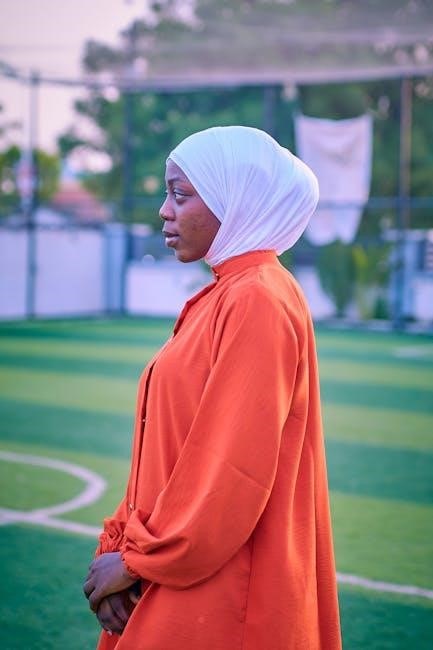
Hop Testing and Performance Criteria
Hop tests assess symmetry, strength, and functional recovery. Single-leg hop distance, triple hop, and crossover hop tests measure performance, with time norms varying by gender (4.5-5.5s for males, 5.5-6.5s for females). Achieving 90% symmetry with the uninvolved limb is critical for clearance.
5.1. Single-Leg Hop for Distance and Symmetry
The single-leg hop test evaluates functional recovery, strength, and symmetry post-ACL reconstruction. Athletes perform hops on one leg, measuring distance and comparing it to the uninvolved limb. A minimum of 90% symmetry is required for clearance. Proper landing mechanics are assessed to ensure stability and control. Gender-specific norms guide performance expectations, with males typically achieving 4.5-5.5 seconds and females 5.5-6.5 seconds. This test ensures the athlete can manage sport-specific demands without compromising joint stability or increasing reinjury risk.
5.2. Triple Hop and Crossover Hop Tests
The triple hop and crossover hop tests assess advanced functional ability and dynamic stability post-ACL reconstruction. The triple hop measures consecutive single-leg hops, emphasizing power and endurance, while the crossover hop evaluates multi-directional movement and control. Both tests require 90% symmetry with the uninvolved limb and proper landing mechanics. These assessments simulate sport-specific agility, ensuring athletes can handle complex movements without instability. Meeting these criteria reduces reinjury risk and confirms readiness for competitive play.
5.3. Hop Test Timing and Gender-Specific Norms
Hop tests include timing metrics to evaluate functional recovery post-ACL reconstruction. Males typically achieve times between 4.5-5.5 seconds, while females range from 5.5-6.5 seconds. Meeting these gender-specific norms ensures symmetry and readiness for sport. The tests are performed in reverse order to assess both limbs, ensuring consistent planting and reducing reinjury risk. Clearance requires achieving these time criteria, confirming functional recovery and readiness for competitive play.
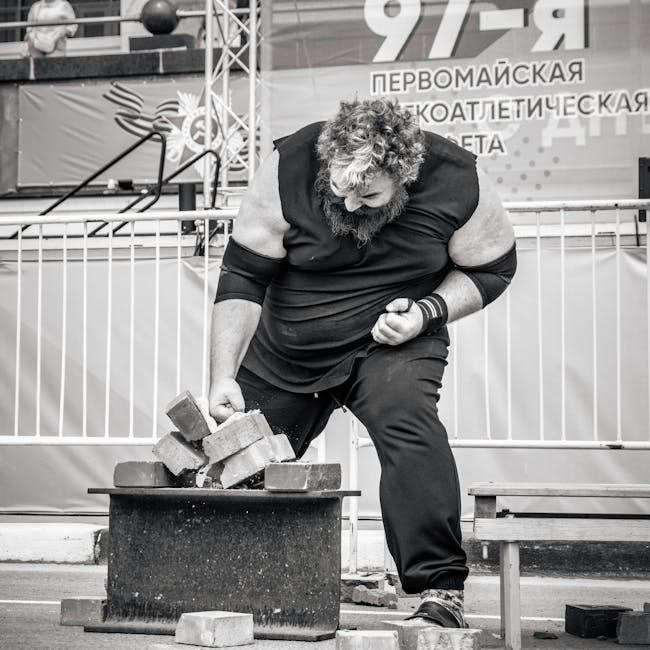
Muscle Strength Evaluation
Muscle strength is assessed using isokinetic testing, requiring 90% symmetry in hamstring and quadriceps strength compared to the uninvolved limb at 60º/sec and 300º/sec.
6.1. Hamstring and Quadriceps Strength Assessment
Hamstring and quadriceps strength is critical for knee stability and athletic performance. Isokinetic dynamometry measures strength at 60º/sec and 300º/sec, ensuring symmetry with the uninvolved limb. Achieving 90% strength symmetry is a key criterion for return to sport, as it indicates functional recovery and reduces reinjury risk. This assessment ensures the athlete can safely progress to sport-specific movements, balancing power and stability in both legs.
6.2. Isokinetic Dynamometry and Strength Ratios
Isokinetic dynamometry measures hamstring and quadriceps strength at specific speeds (60º/sec and 300º/sec). This tool evaluates strength ratios between the involved and uninvolved limbs, ensuring symmetry and functional recovery. Achieving 90% strength symmetry is a critical criterion for return to sport, as it indicates balanced power and stability. Strength ratios help assess readiness for dynamic movements, reducing reinjury risk by confirming musculature is prepared for athletic demands.
6.3. Achieving 90% Strength Symmetry with the Uninvolved Limb
Achieving 90% strength symmetry is critical for return to sport, ensuring the involved limb matches the uninvolved limb’s strength. Isokinetic dynamometry measures this at 60º/sec and 300º/sec, assessing hamstring and quadriceps power. Symmetry prevents compensatory mechanisms and reduces reinjury risk. Athletes must demonstrate balanced strength to perform athletic tasks effectively. This criterion confirms musculature readiness for dynamic movements and high-level activities, ensuring safe return to competition.
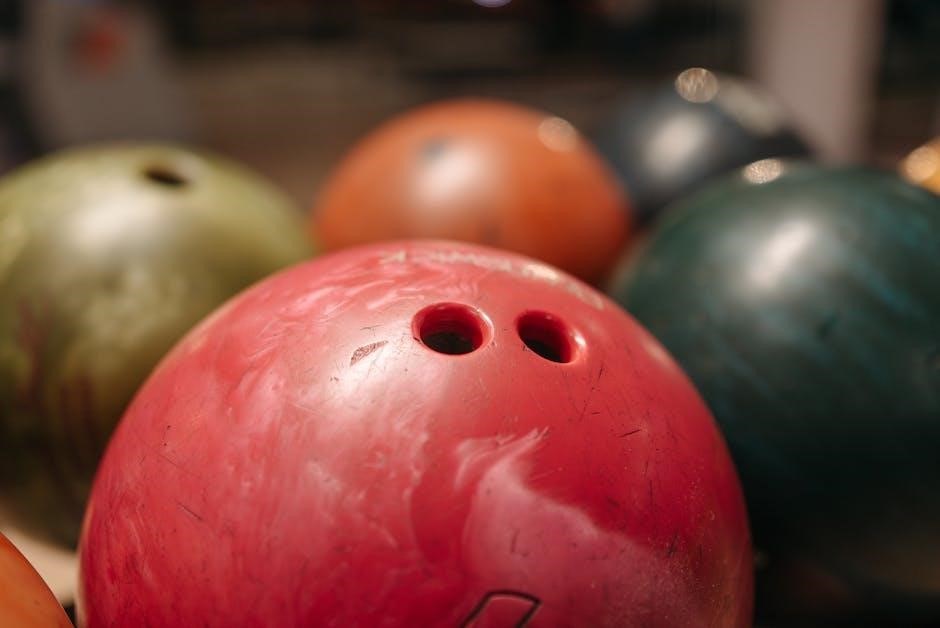
Psychological Readiness and Confidence
Psychological readiness is crucial for successful return to sport. Mental preparedness, confidence, and fear of reinjury must be assessed. Achieving strength and functional criteria reduces reinjury risk, especially in younger athletes.
7.1. The Role of Mental Preparedness in Return to Sport
Mental preparedness plays a vital role in an athlete’s successful return to sport after ACL reconstruction. Confidence, resilience, and fear of reinjury significantly impact readiness. Research indicates that athletes who meet return-to-sport criteria, such as strength and hop tests, often exhibit higher confidence levels. Addressing psychological factors through counseling and gradual exposure to sport-specific drills enhances mental readiness. A study by Mark V. Paterno et al. highlights the correlation between confidence and reduced ACL reinjury risk, emphasizing the importance of psychological support in rehabilitation programs.
7.2. Assessing Athlete Confidence and Fear of Reinjury
Assessing an athlete’s confidence and fear of reinjury is crucial for successful return to sport after ACL reconstruction. Psychological readiness, often measured through questionnaires and clinical interviews, directly impacts functional performance. Studies by Mark V. Paterno et al. reveal that lower confidence and heightened fear of reinjury correlate with reduced likelihood of meeting return-to-sport criteria. Addressing these psychological barriers through targeted interventions, such as gradual exposure to sport-specific drills and counseling, enhances mental readiness and reduces reinjury risk, ultimately improving long-term outcomes and athlete satisfaction.
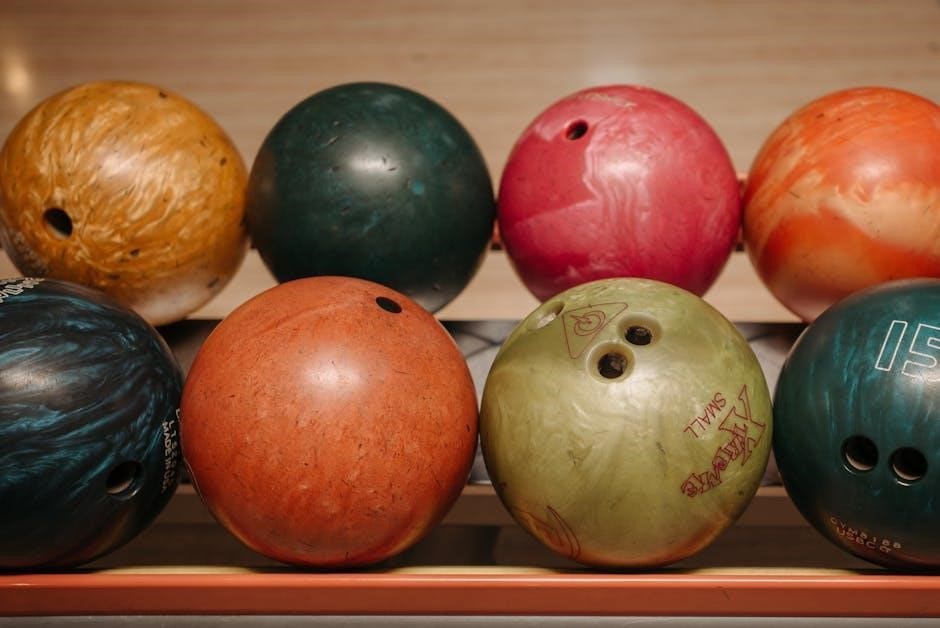
Prevention of Reinjury and Long-Term Outcomes
Preventing ACL reinjury involves neuromuscular training, proper landing mechanics, and sport-specific drills. Monitoring functional performance ensures long-term outcomes and reduces recurrence risks.
8.1. Strategies for Reducing the Risk of ACL Reinjury
Effective strategies to reduce ACL reinjury risk include neuromuscular training programs, emphasizing proper landing mechanics and dynamic stability. Strengthening exercises targeting hamstrings and quadriceps are crucial. Sport-specific drills improve functional symmetry and confidence. Monitoring through hop tests and strength assessments ensures readiness. Psychological preparedness and gradual progression in training also play key roles. Implementing these measures minimizes recurrence and supports long-term athletic performance and joint health.
8.2. The Importance of Neuromuscular Training Programs
Neuromuscular training programs are essential for reducing ACL reinjury risk by improving strength, balance, and proprioception. These programs address movement patterns and muscle imbalances, particularly in high-risk populations like female athletes. They enhance dynamic stability and joint control during sports-specific movements. Incorporating plyometrics, agility drills, and reactive exercises helps athletes develop better eccentric strength and landing mechanics. Consistent participation in such programs reduces injury risk and improves functional performance, making them a cornerstone of ACL rehabilitation and prevention strategies.
8.3. Monitoring and Maintaining Functional Performance
Monitoring functional performance is critical to ensure athletes meet return-to-sport criteria and reduce reinjury risk. Regular assessments include strength testing, hop tests, and movement analysis to evaluate symmetry and mechanics. Objective measures like isokinetic dynamometry and functional assessments (e.g., single-leg squats) are used to track progress. Athletes must demonstrate normalized gait, weight-bearing mechanics, and pain-free movement. Passing return-to-sport tests with 90% or higher performance compared to the uninvolved limb is often required to ensure readiness for competition.
9.1. Summary of Key Criteria and Testing Protocols
The key criteria for returning to sport after ACL reconstruction include medical clearance, achieving 90% strength symmetry, full range of motion, absence of pain or effusion, and normalized gait mechanics. Testing protocols involve functional assessments such as single-leg squats, broad jump, hop tests, and agility drills to evaluate readiness. Additionally, psychological readiness and confidence are crucial factors in the decision-making process. Meeting these criteria ensures a safe and effective return to competition, thereby minimizing the risk of reinjury and optimizing long-term outcomes for athletes.
9.2. Final Considerations for Successful Return to Sport
A successful return to sport after ACL reconstruction requires a synthesis of medical clearance, strength, hop performance, and psychological readiness. Athletes must demonstrate normalized mechanics, absence of pain, and confidence in their abilities. Continued monitoring and adherence to neuromuscular training programs are essential to minimize reinjury risk. Tailored rehabilitation and gradual progression ensure long-term success. Final assessments should confirm functional symmetry and readiness for sport-specific demands, providing a comprehensive foundation for safe and effective competition.